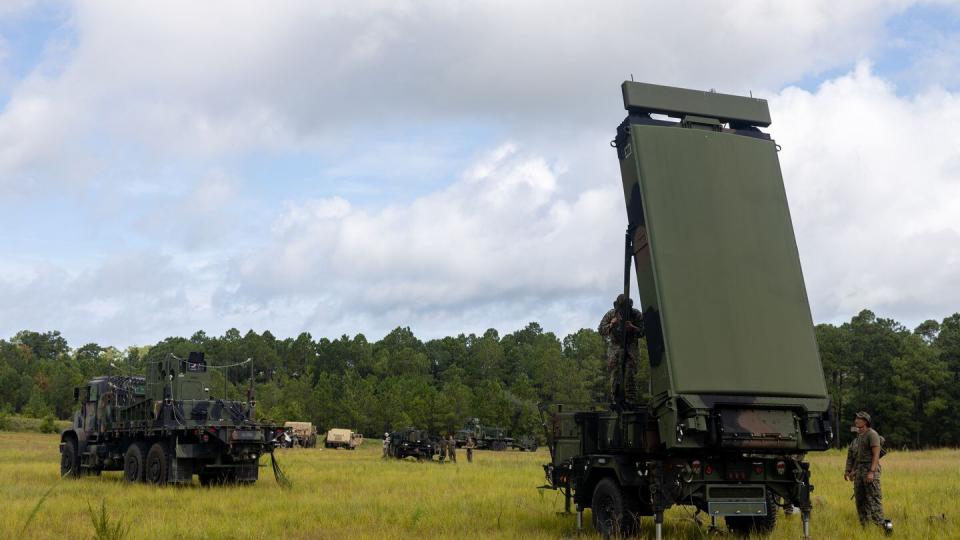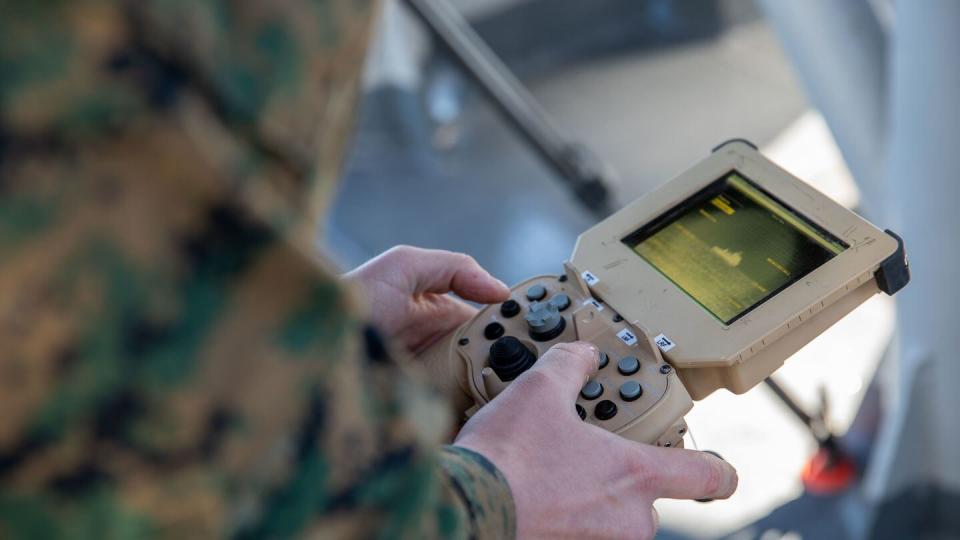Radars and drone killers: Revamped Marine office hastens tech creation
The U.S. Marine Corps is developing new radars and leveraging its counter-drone systems as it looks to modernize and expand key capabilities.
The service’s Program Executive Office Land Systems is eyeing its newly reorganized portfolios — including ground-based air defense, expeditionary radars and light armored vehicles — to find efficiencies and build upon existing technology to rapidly field new systems and expand the portfolio.
Here are three notable areas the Corps is focused on:
Radars
One example involves the expeditionary radars program, which previously housed only the Ground/Air Task Oriented Radar. The office’s chief, Stephen Bowdren, told Defense News the G/ATOR is an active radar that has proved itself in the field and is now pivotal to future aspects of warfare like expeditionary advanced base operations.
But the Corps is still seeking a passive radar to complement G/ATOR and help Marines sense the battlefield without giving away their location.
Bowdren said his expeditionary radars program office is starting with an existing Army passive radar prototype to form the basis of a MuDRaCE — or Multi-Domain Radar for a Contested Environment — family of systems, as well as a Medium-Range Air Defense Radar, or MARAUDER, to field “as soon as possible.”
Bowdren noted he hopes this new passive radar will be ready for operations within two years given the service is approach the effort with an existing prototype.

Countering drones
Bowdren said his ground-based air defense portfolio is a prime example of “running fast with scissors.”
“Within the next year, we will have operationally assessed [the Medium-Range Intercept Capability]. We will have completed [initial operational test and evaluation] on, I think, both [the light and regular versions of the Marine Air Defense Integrated System. We are looking to field both of those systems probably within the next 12 to 18 months, easily,” he noted.
He said this portfolio has been able to move rapidly because the government serves as the systems integrator, pulling together existing sensors, computers, effectors and more to create kinetic and non-kinetic anti-drone technology.
Bowdren said the program office started with the assumption that its tech-integration effort would be a wild success: If the technology came together and was ready for fielding on a short timeline, what work did the program office need to do to ensure the training, the tactics development and the sustainment strategy were also ready to go on a short timeline?
It would have been a wasted effort if the tech integration failed and the program had to restart with a different radar or a different missile, for example. Indeed, there’s some risk in doing all this work in parallel, he said, but with that risk comes the reward of being able to field critical capabilities on a short timeline.

PEO Land Systems is considering further expanding that ground-based air defense portfolio, even as the original counter-drone systems continue through final test and evaluation. It could become a broader counter-intrusion portfolio, with Bowdren saying he sees benefits to incorporating an existing but separate Ground-Based Operational Surveillance System into the portfolio.
“Is that something that we add to our GBAD portfolio so that when you deploy a solution for counter-air to a base, it’s not a whole other separate suite of systems and boxes and screens, but it’s built in and plugged into the already existing security system?” he said.
He added that the Corps also must consider how to counter unmanned ground vehicles and unmanned surface vessels. “So is there really a counter-UxS portfolio we should be looking at?”
Recon vehicles
The light armored vehicle portfolio — specifically, the Advanced Reconnaissance Vehicle — is in limbo, as the Marine Corps reconsiders how it wants to meet its reconnaissance mission and with what combination of manned and unmanned vehicles on the ground, on the water and in the air.
Bowdren said the recon community is still experimenting to help define that future suite of programs and equipment. The Advanced Reconnaissance Vehicle, or ARV, will be at the center of that suite of systems, but the new vehicles could be supplemented by Ultra Light Tactical Vehicles, manned and unmanned surface craft, unmanned aerial systems, and more.
Bowdren said that study would be completed “soon.”
Even as those discussions and the related question of funding continue, Bowdren said his office is preparing to move as fast as it’s allowed with the available resources.
The program office is working with industry to develop ARV-30 prototypes that use the same 30mm cannon as that on the Amphibious Combat Vehicle. This would be the second ARV variant, following the command, control, communications and computer/uncrewed aerial systems (C4/UAS) variant that the Corps has tested since prototypes were delivered in December 2022.
Bowdren said his office is “committed” to pushing forward on the ARV family of vehicles even though the start date for procurement remains in flux.

